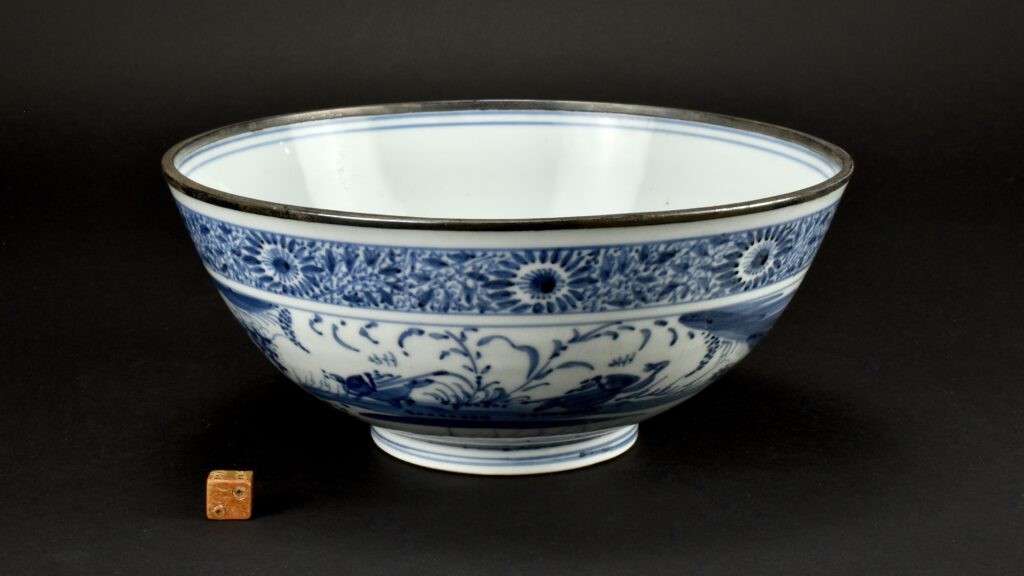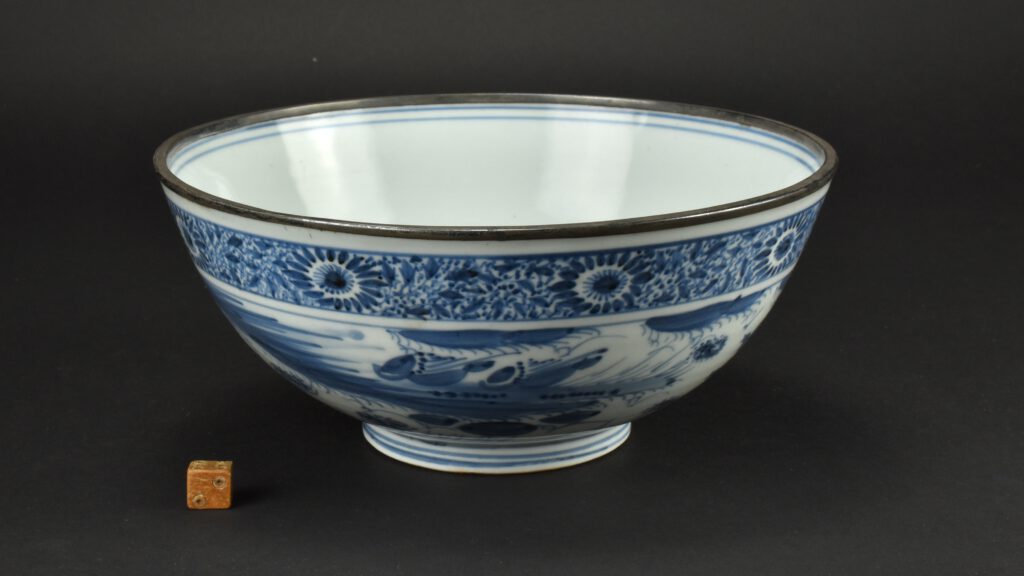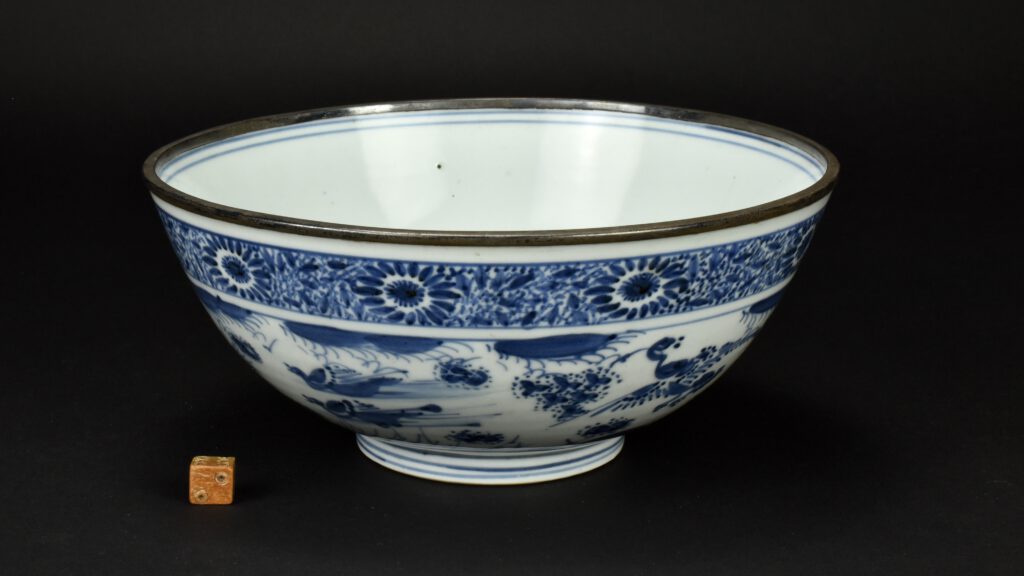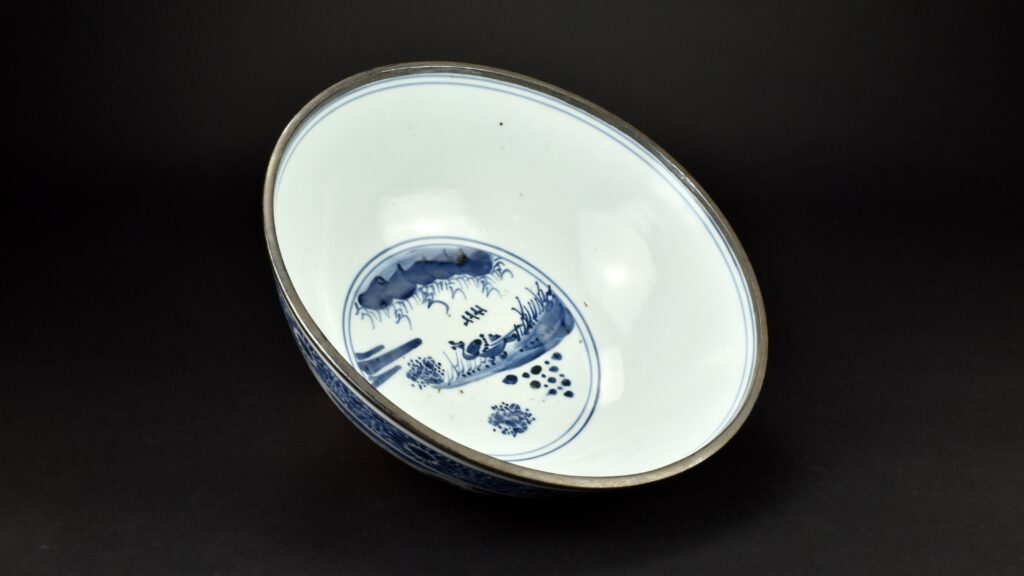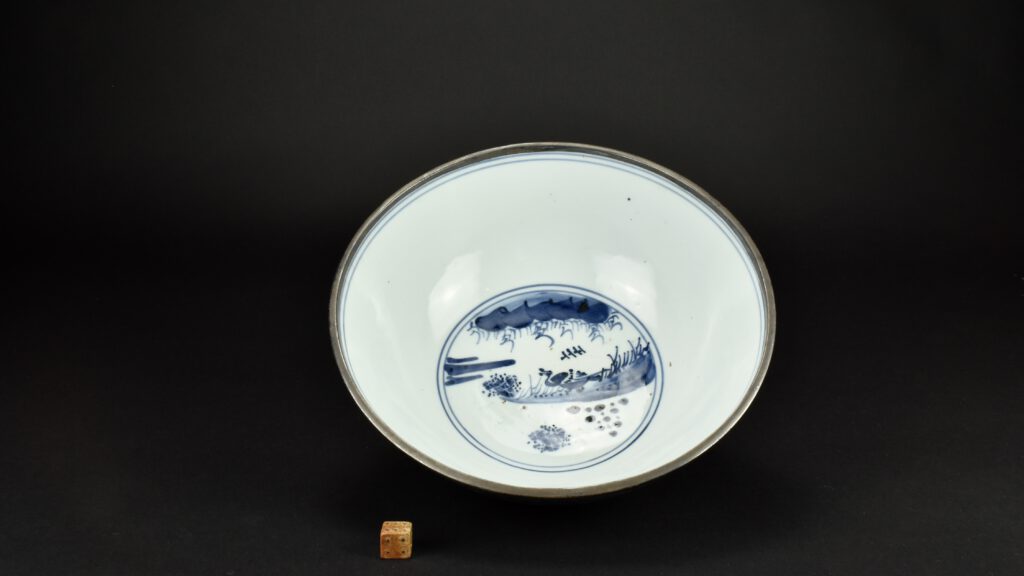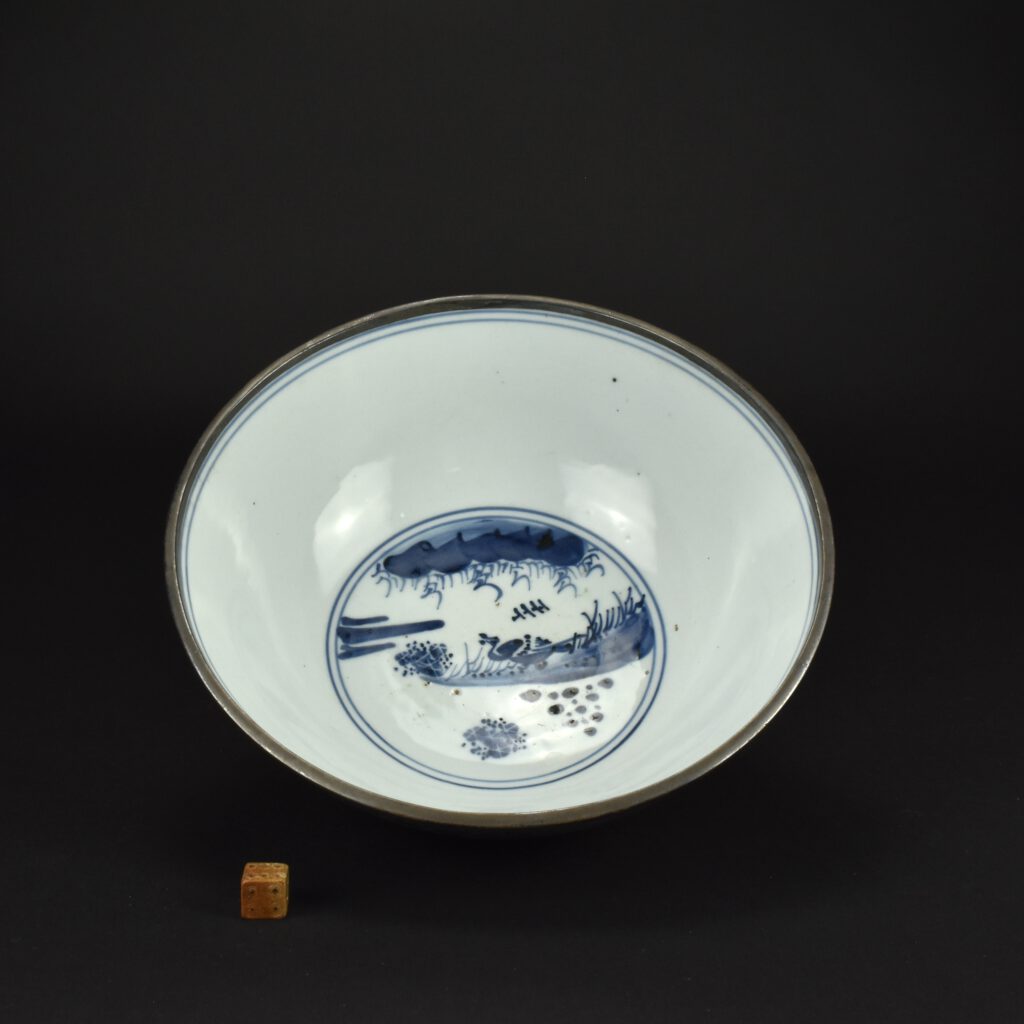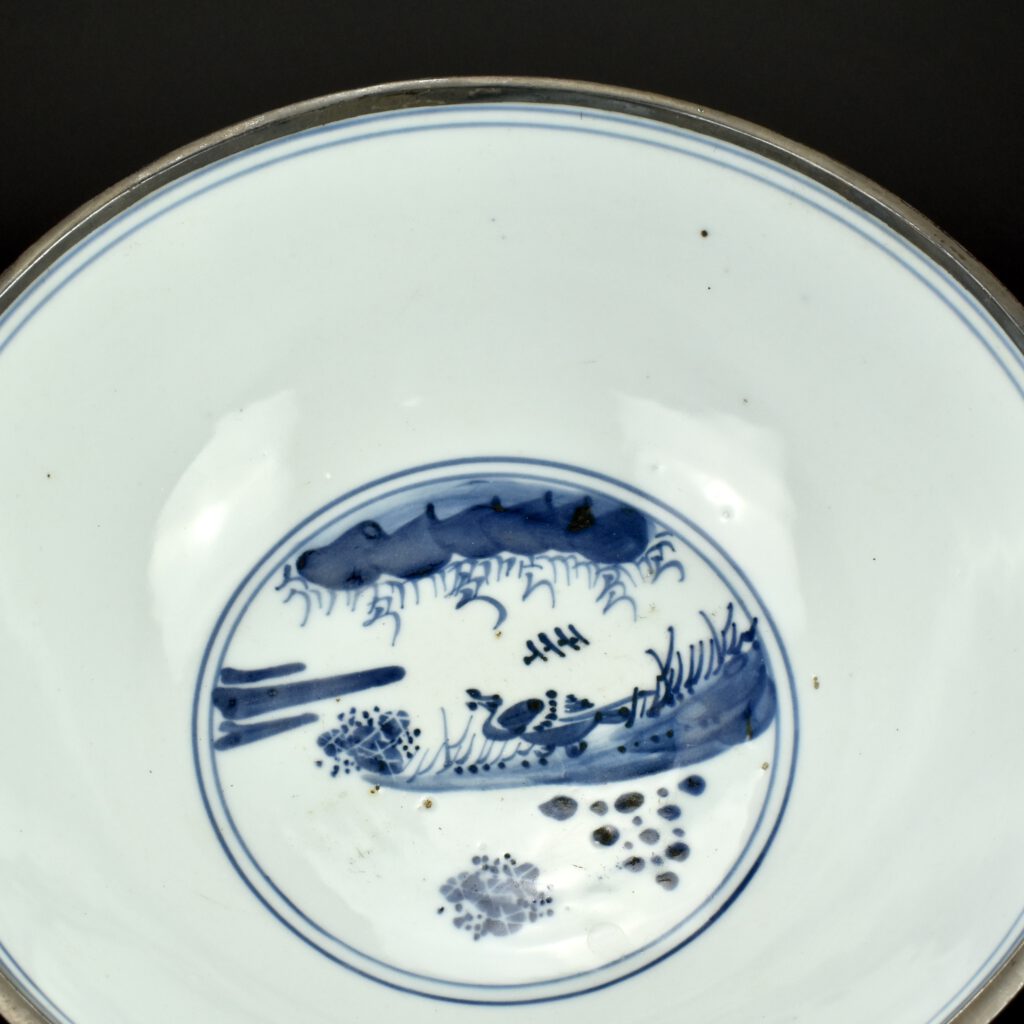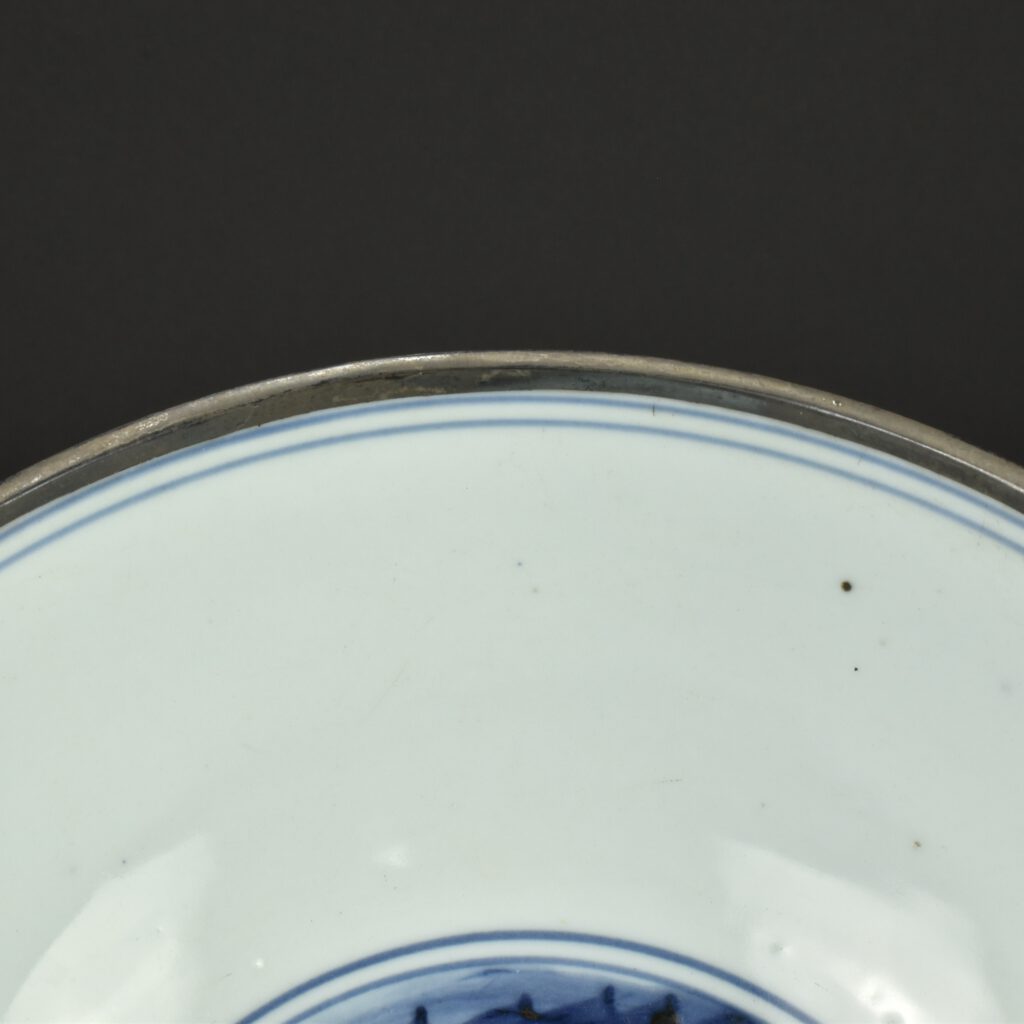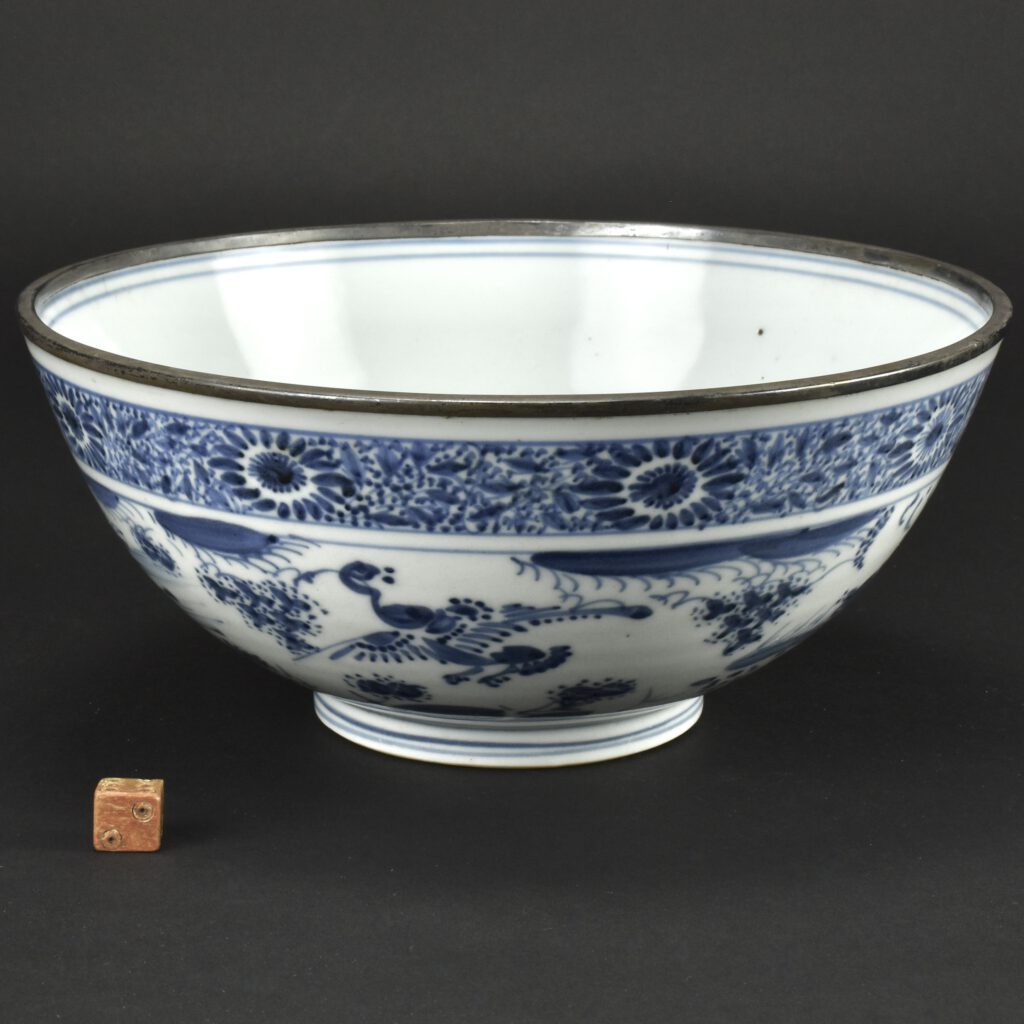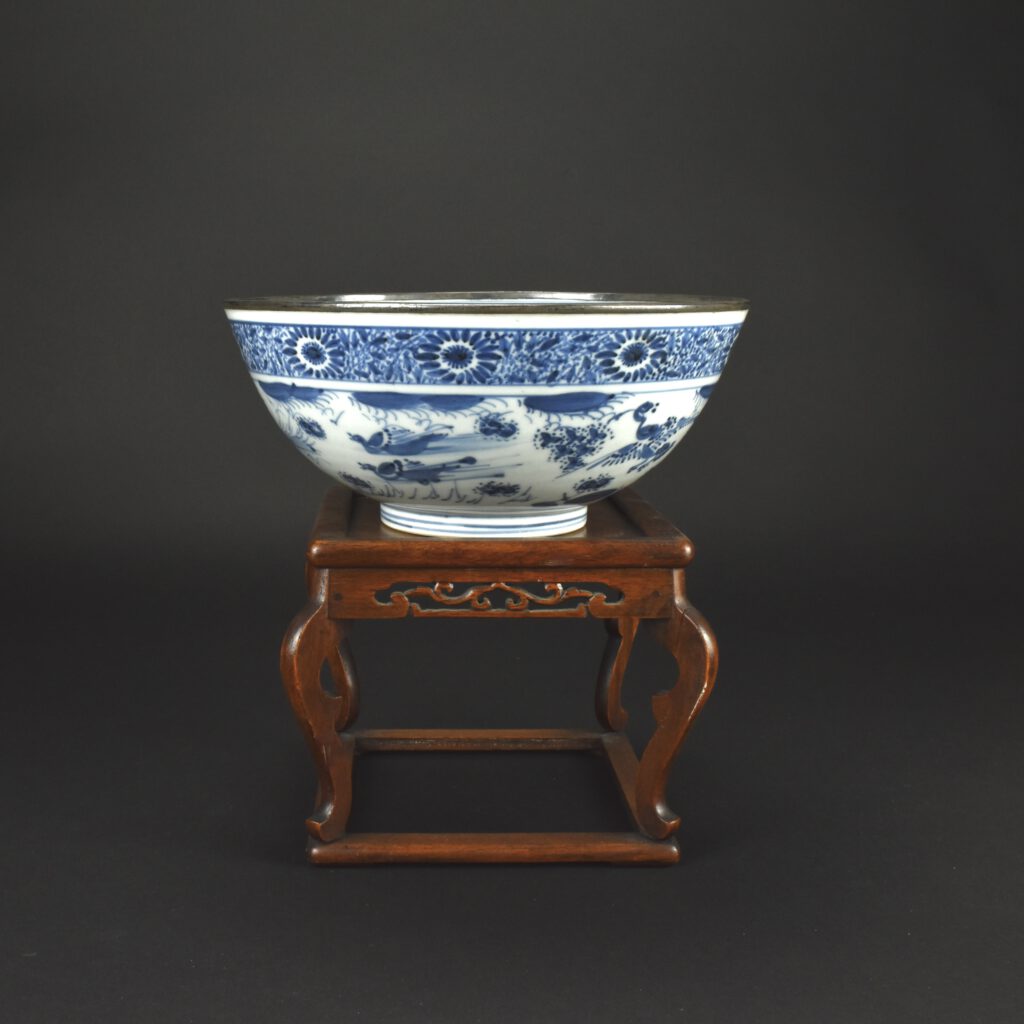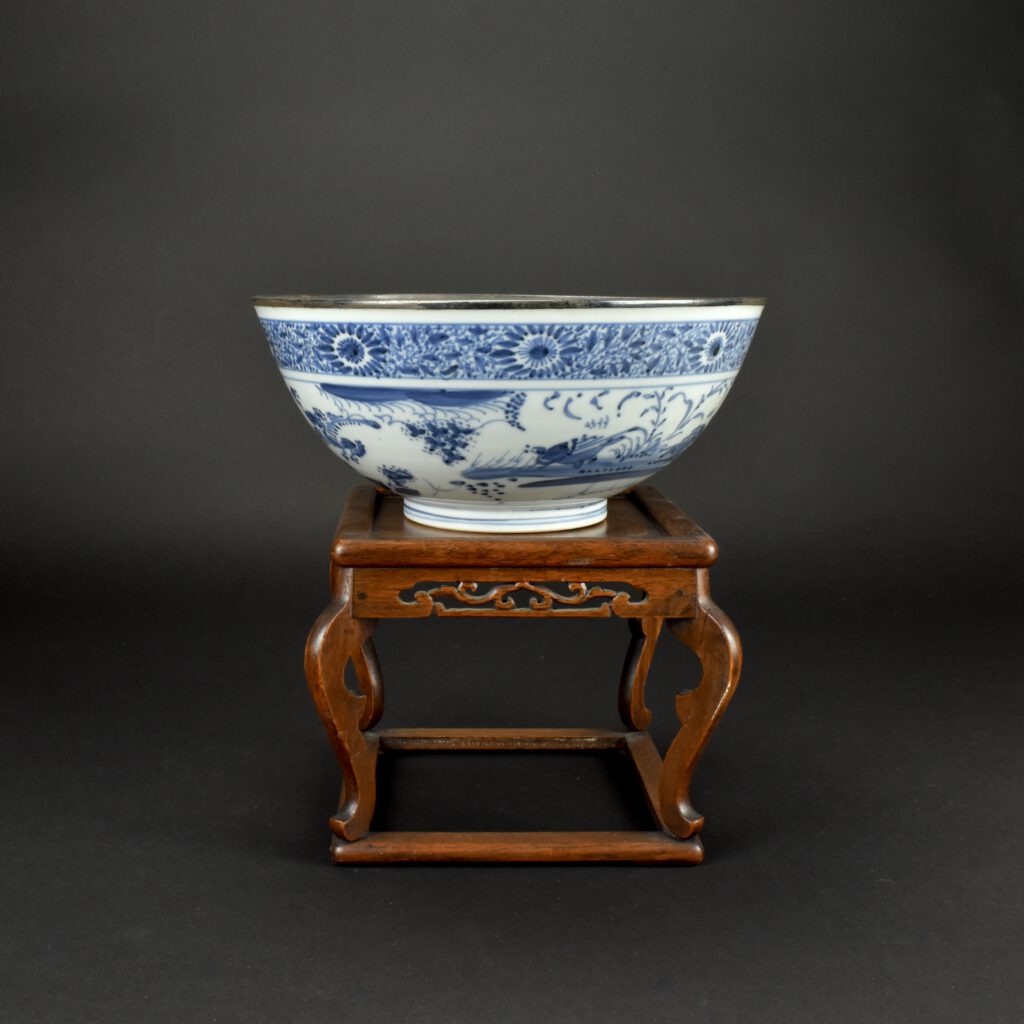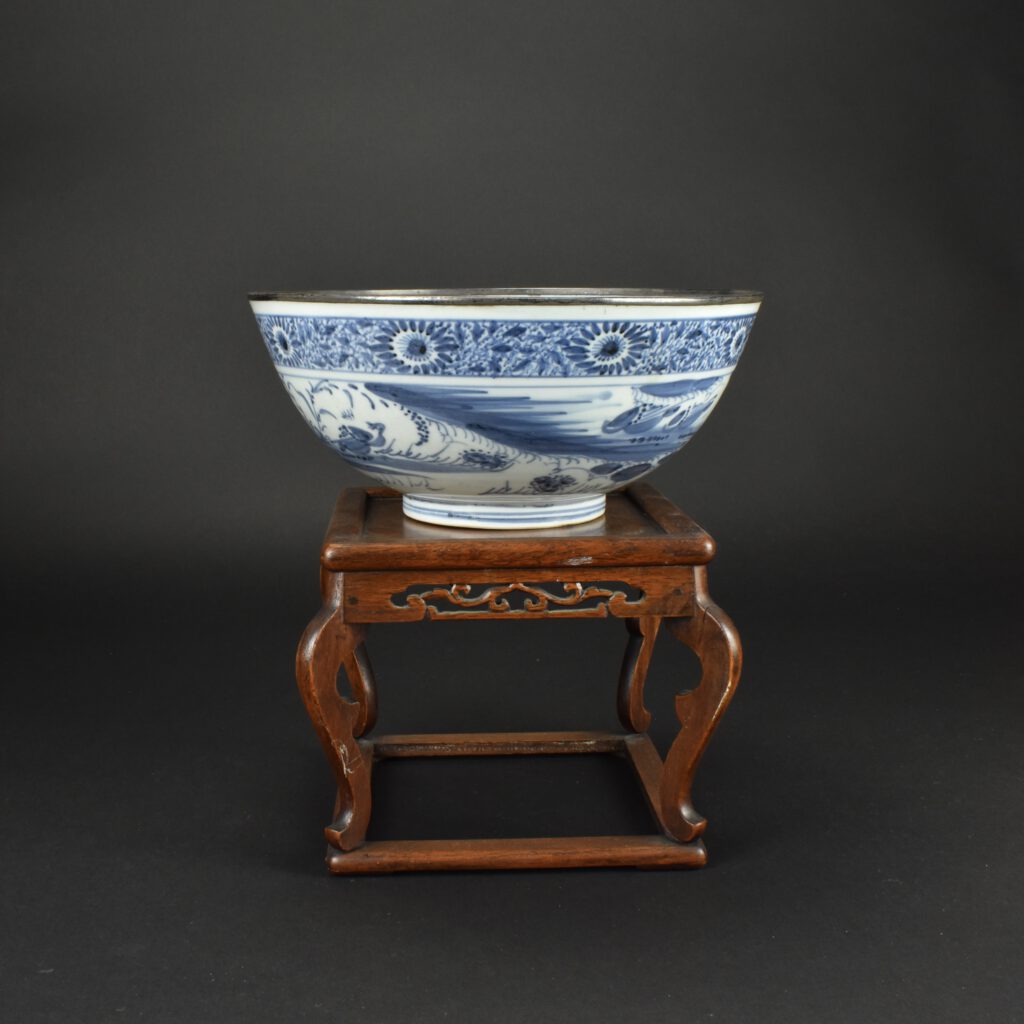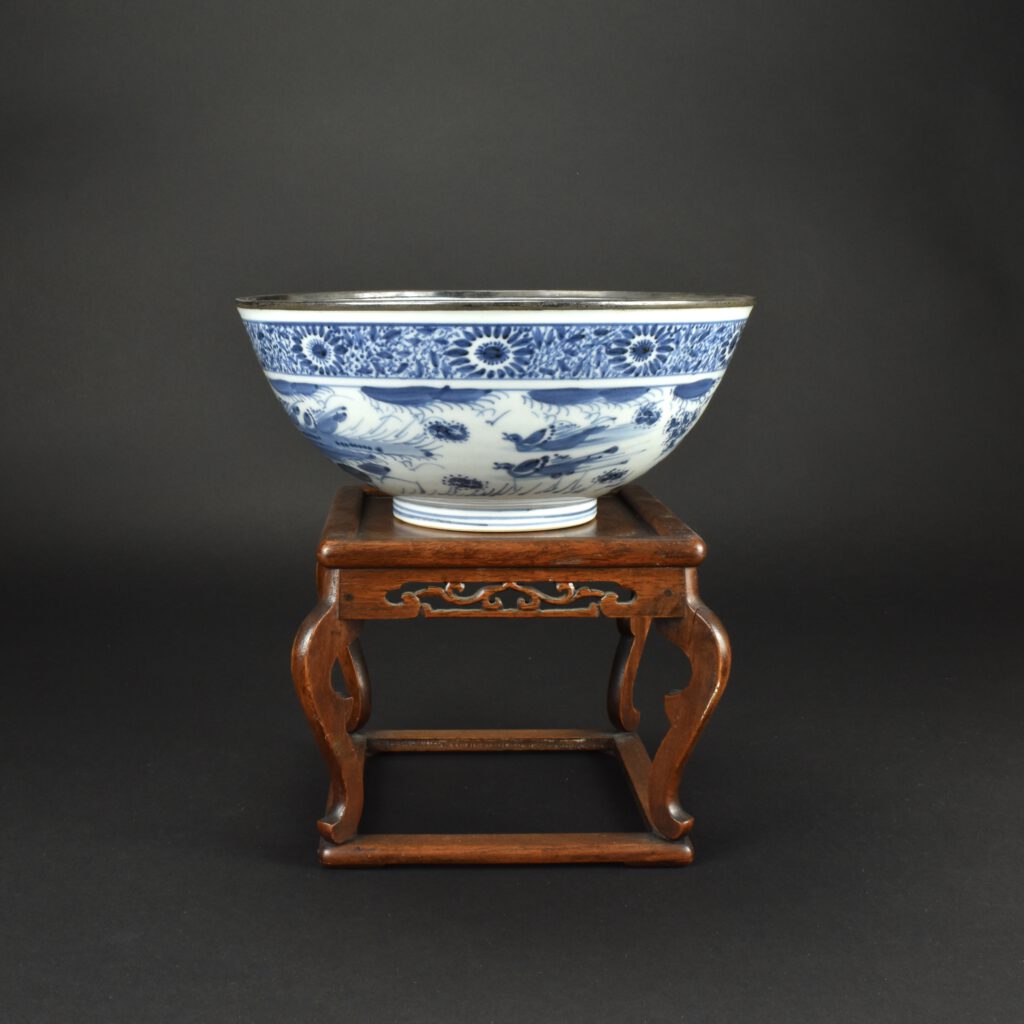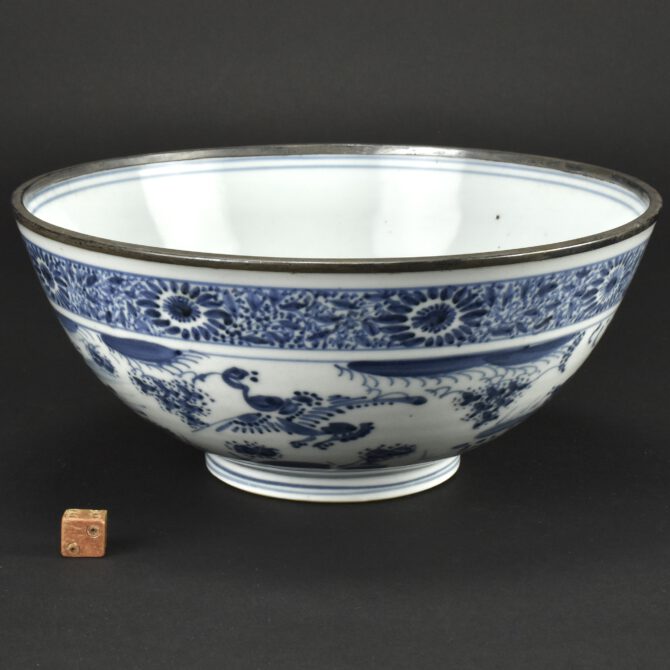
Tianqi Blue and White Porcelain Bowl
A Late Ming Ko-Sometsuke Porcelain Bowl, Tianqi Period (1621 – 1627) or early Chongzheng, c.1621-1635 (wood stand not included). This Transitional blue and white porcelain bowl from the end of the Ming dynasty was made for the Japanese market. Bowls of this size made for the Japanese market are rare. The painting style is very unusual and seems to have been used for pieces made for Japan, and possibly other countries in Southeast Asia. Chinese porcelain painting nearly always consists of lines delineating form filled in with tonal washes, this bowl by contrast, is decorated directly. There are no outlines, just different thicknesses of wash and line creating these lively scenes. Some of the painting is very free, details are painted separately, with one’s eye reading the dots and dashes as a bird or water etc. This free approach mirrors the decoration found on the earliest Japanese porcelain, Shoki-imari (c.1620-1640). The base has an apocryphal Ming mark, that of Jiajing (1522-1566).
Ko-Sometsuke is a term used to describe Chinese blue and white porcelain made for Japan. This late Ming porcelain was made from the Wanli period (1573-1620), through the Tianqi period (1621 – 1627) ending in the Chongzhen period (1628-1644), the main period of production being the 1620’2 and 1630’s. This porcelain made in China for Japanese reflected a rise in interest of the Japanese tea ceremony but it also coincided with the beginning of porcelain production in Japan (from c.1610/20). The porcelain objects produced in China were made especially for the Japanese market, both the shapes and the designs were tailored to Japanese taste, the production process too allowed for Japanese aesthetics to be included in the finished object. Its seems firing faults were added, repaired tears in the leather-hard body were too frequent to not, in some cases, be deliberate. These imperfections as well as the fritted Mushikui (insect-nibbled) rims and kiln grit on the footrims all added to the Japanese aesthetic. These imperfections were something to be treasured by the Japanese, they reflect an imperfect world and the aesthetics of Wabi-Sabi. These ‘faults’ was an anathema to the Chinese but they went along with it to satisfy the needs of their Japanese customers. The shapes created were often expressly made for the Japanese tea ceremony, especially the meal associated with tea drinking, the Kaiseki. Small dishes for serving food at the tea ceremony are the most commonly encountered form. Designs, presumably taken from Japanese drawings sent to China, these are very varied and often extremely imaginative. They often used large amount of the white porcelain contrasting well with the asymmetry of the design, sometime the Chinese couldn’t help themselves but to fill in these gaps with ‘excess’ decoration. Many other forms were made, among them are charcoal burners, water pots, Kōgō (incense box) as well as variously shaped dishes in the form of fish, fruit or familiar country animals.
SOLD
- Condition
- The rim has had a silver rim added, probably to hide small rim chips. The metal rim was probably added in Japan.
- Size
- Diameter 21.4 cm (8 1/2 inches)
- Provenance
- N/A
- Stock number
- 27002
